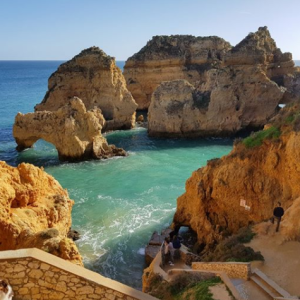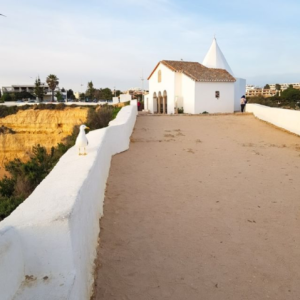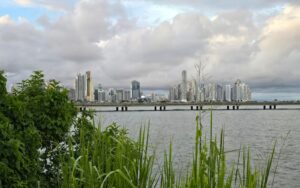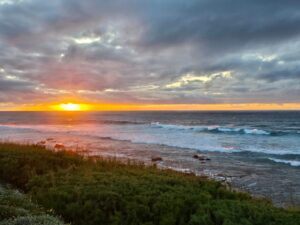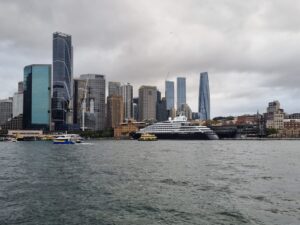Somehow I had a strangely familiar feeling when I arrived in Ushuaia for the second time in almost a year. I simply love it here. The city is very lively and although it is largely characterized by tourism, the people are friendly and welcoming. Perhaps it’s also because Ushuaia is the gateway to Antarctica and tourism there is characterized by different people than in the Caribbean, for example. The ongoing economic crisis in Argentina and the recent political change with the devaluation of the Argentinian peso by 50 % are hardly noticeable here at first glance.
I had already walked some of the streets and squares last time. I always try to get to know places I haven’t been to yet and want to reach everything on foot if possible. Every time, I discover something new, landscapes, nature, buildings, curiosities, perspectives, people and events. ” You have only really been where you have walked,” said Johann Wolfgang von Goethe. It was only on the Way of St. James that I really experienced how true this is.

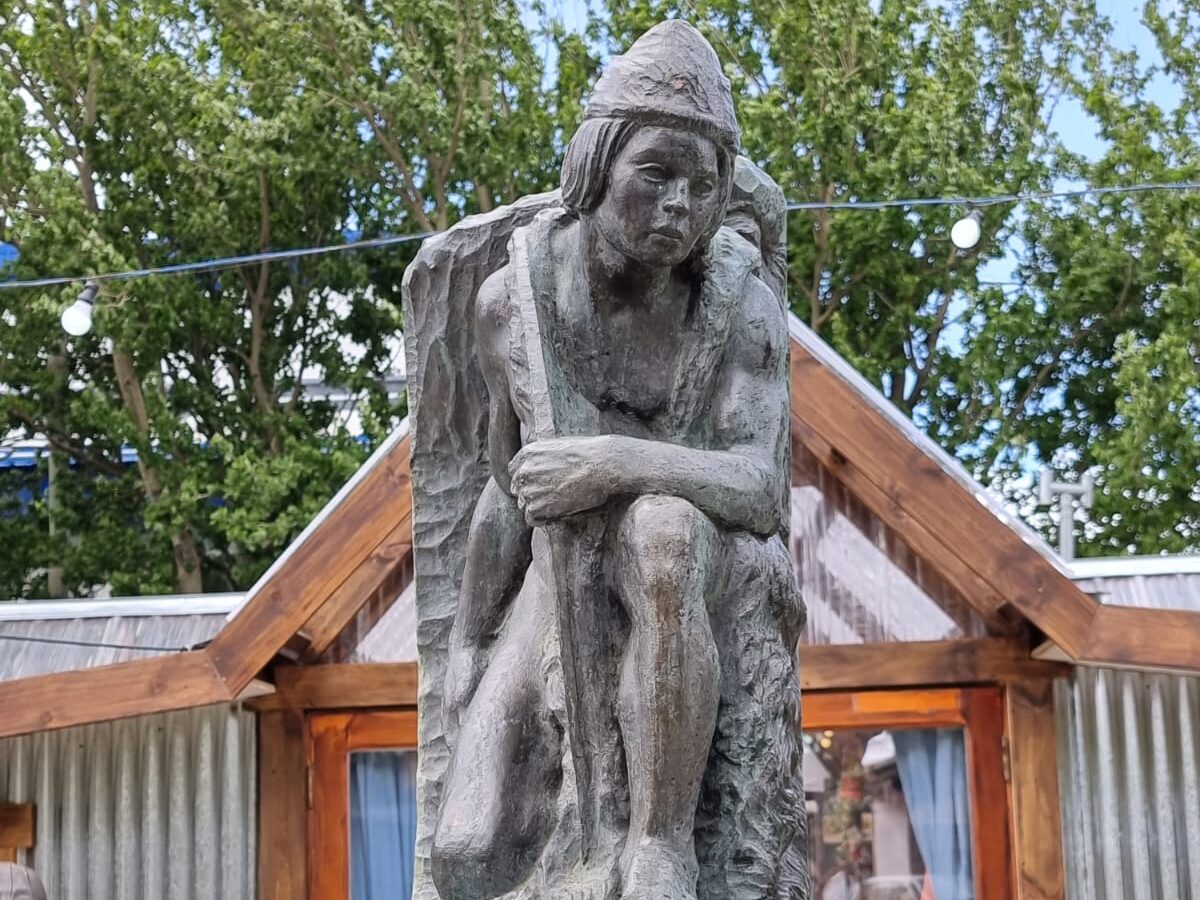


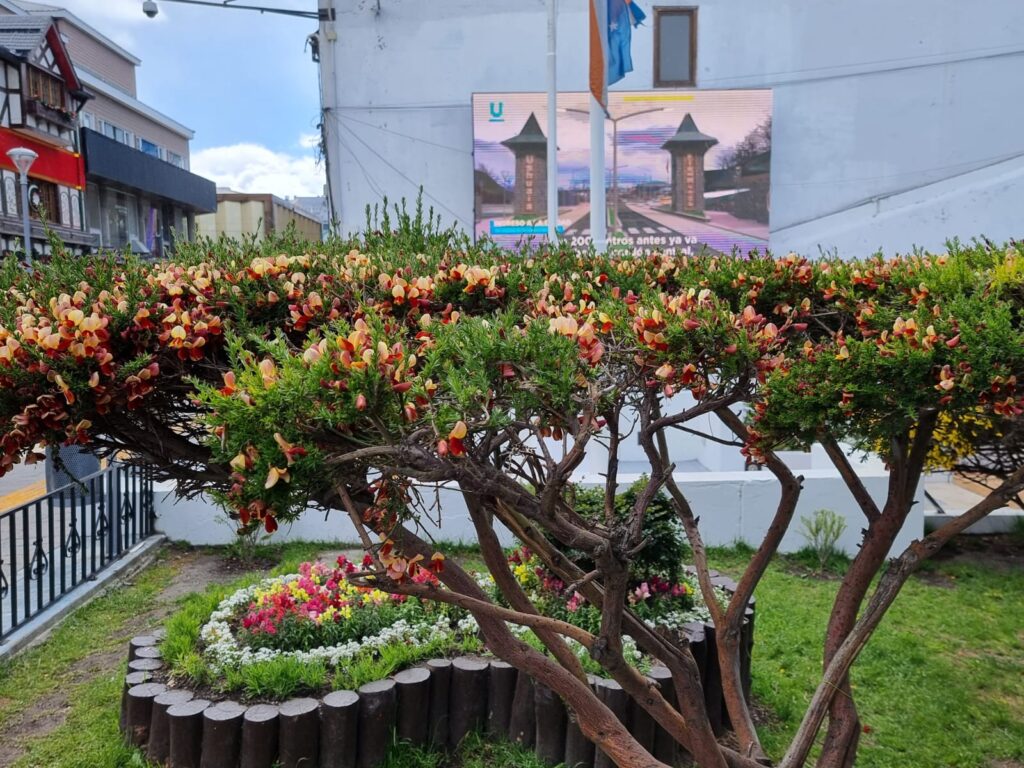

Things got going on the evening of December 6. The new guests had moved into their suites and received their safety briefings. The voyages through the Beagle Channel and the Drake Passage were very calm this time. We used the days at see for training and safety exercises. On December 9, we reached our destination and the first Discovery day was a hit:
Imperial weather meets emperor penguins! Together with the captain, our Discovery team researched possible places where we could see the increasingly rare emperor penguins in advance. We headed for Snow Island in the Weddell Sea. It was a once-in-a-lifetime opportunity, especially as many regular travelers to Antarctica had not seen emperor penguins for years. This time we struck luck. We flew by helicopter onto the ice, which the Antarctic summer will turn into water in a few weeks, and landed about a kilometer from several emperor penguin colonies. From there, we walked across the ice, which was quite slushy in places but still stable.
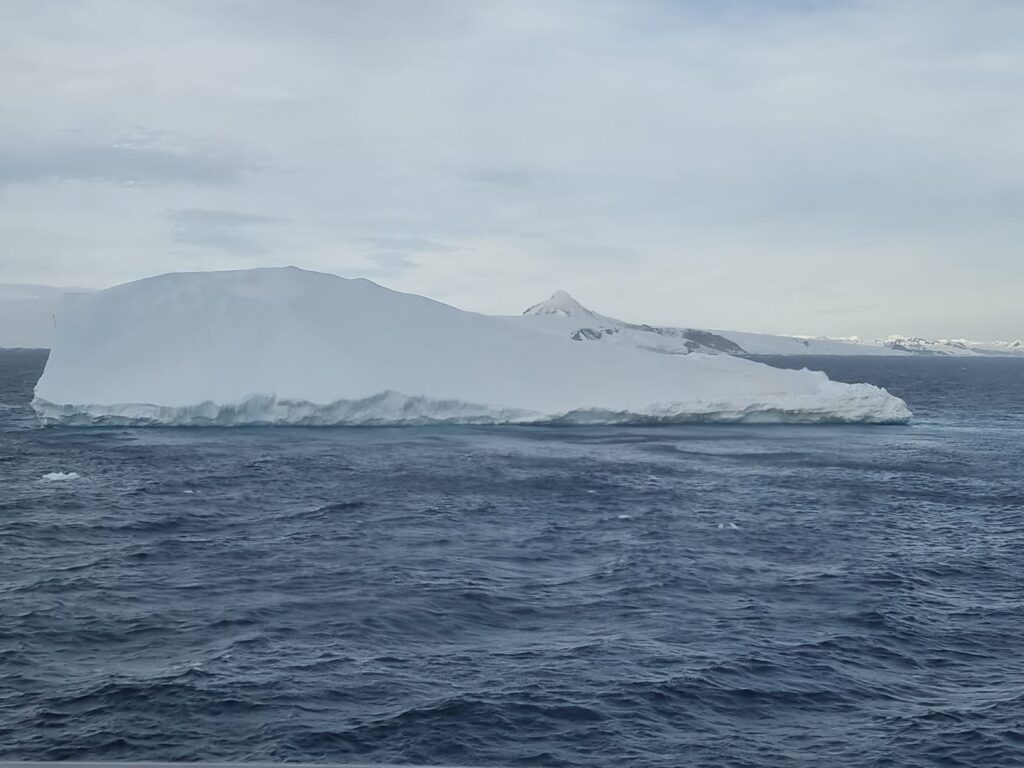
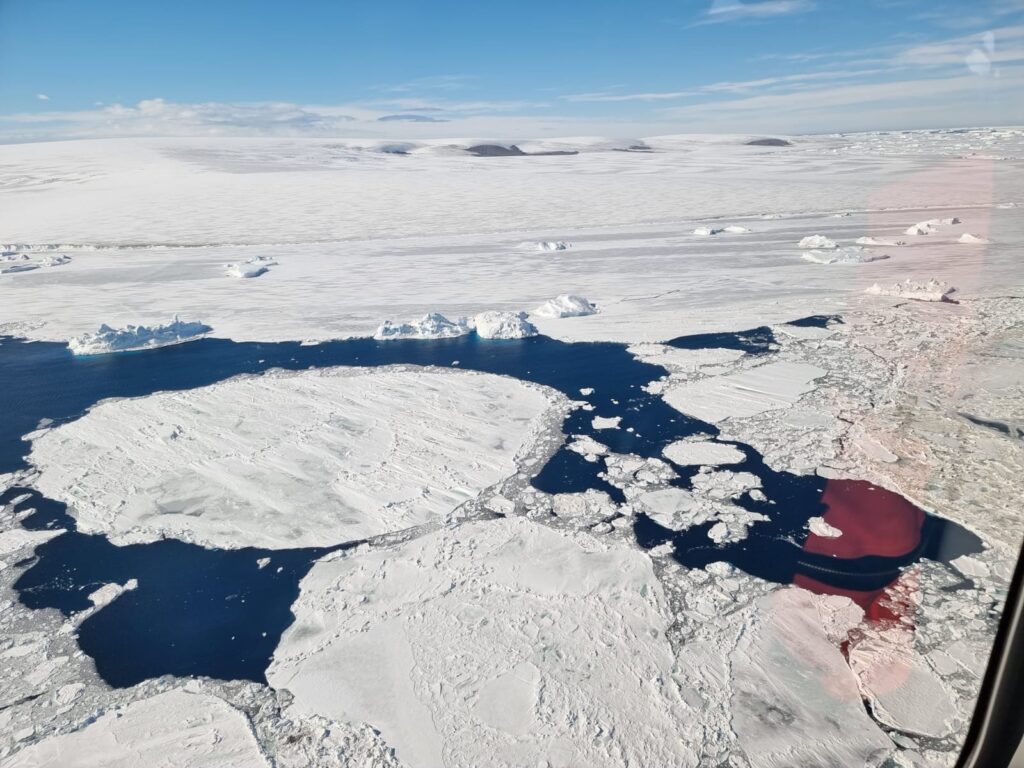
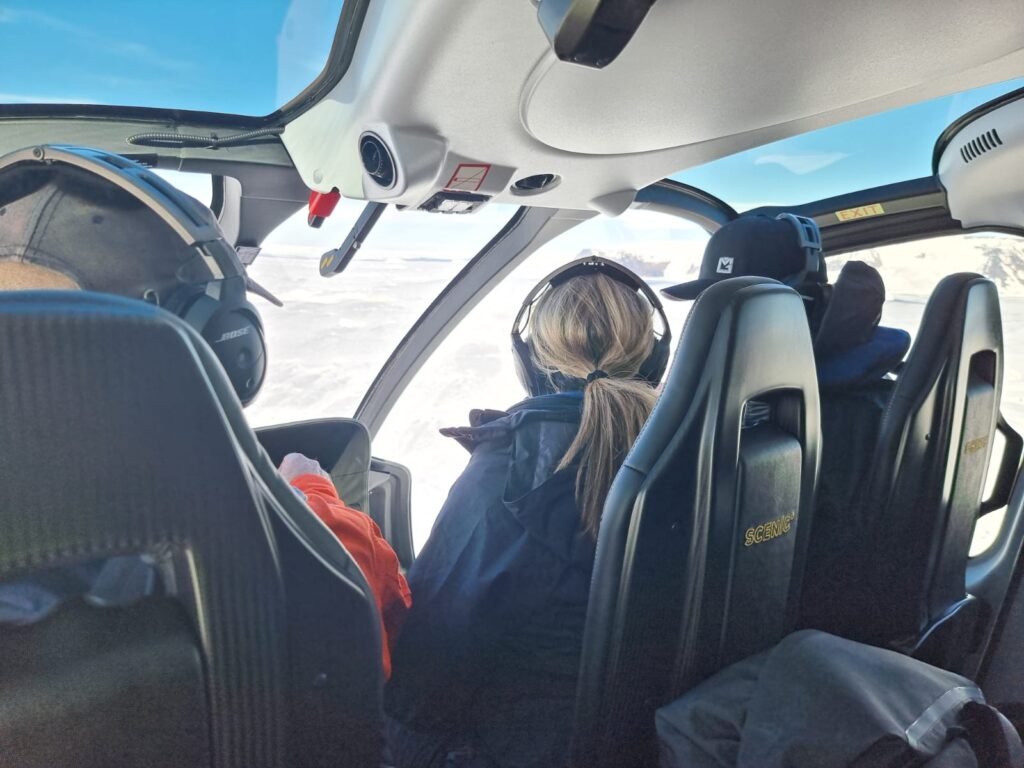
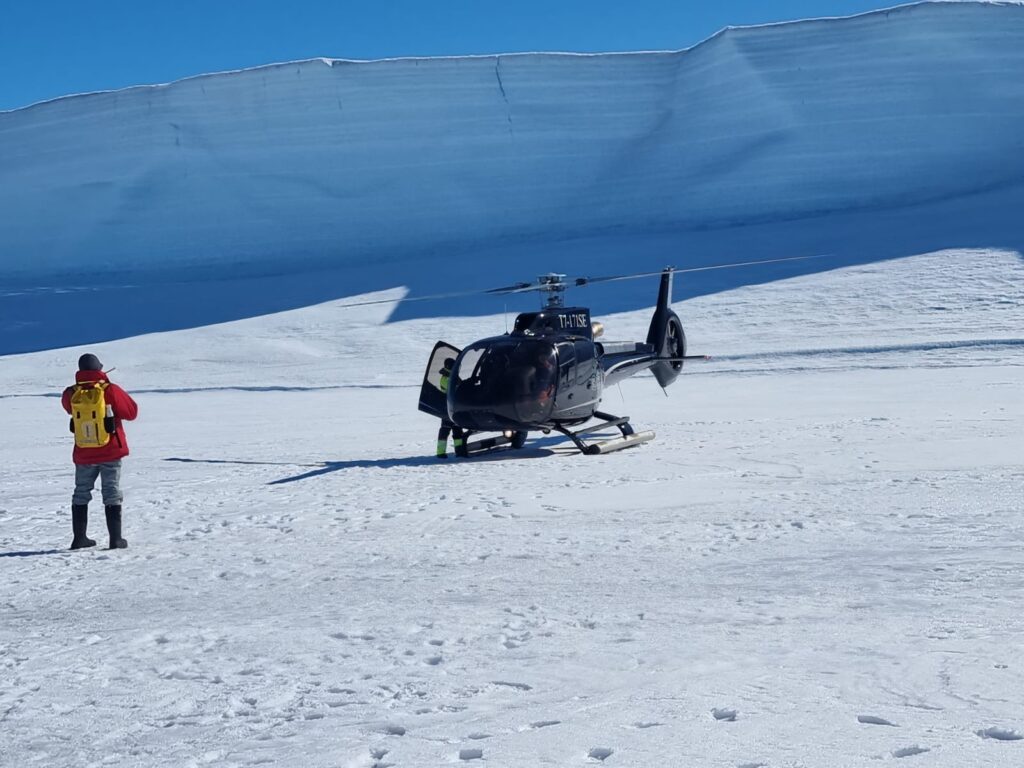
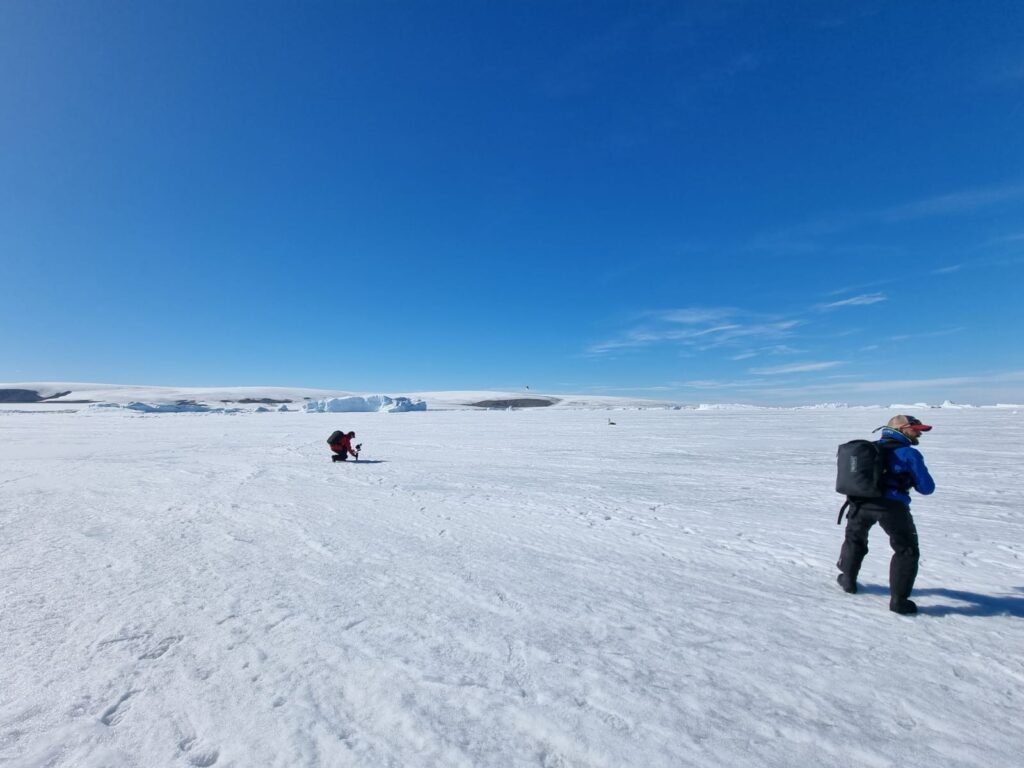

The Discovery team had drawn clear boundaries with flags as to how far they were allowed to approach the colonies. A distance of 5 meters is the minimum. Unfortunately, the emperor penguins did not adhere to this rule. The human visitors kept a respectful distance, but not the curious penguins, who came closer and closer. We had no choice but to retreat as instructed. But this encouraged the penguins and their chicks even more. It was a game of back and forth.


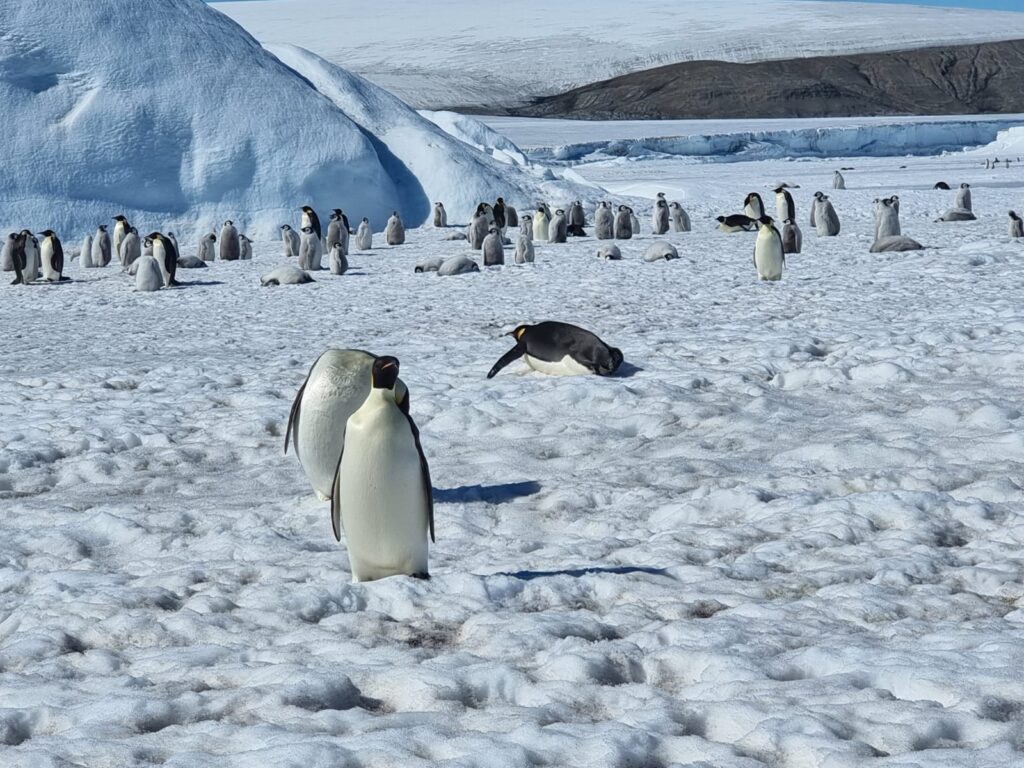
The following days were characterized by beautiful weather and clear visibility.


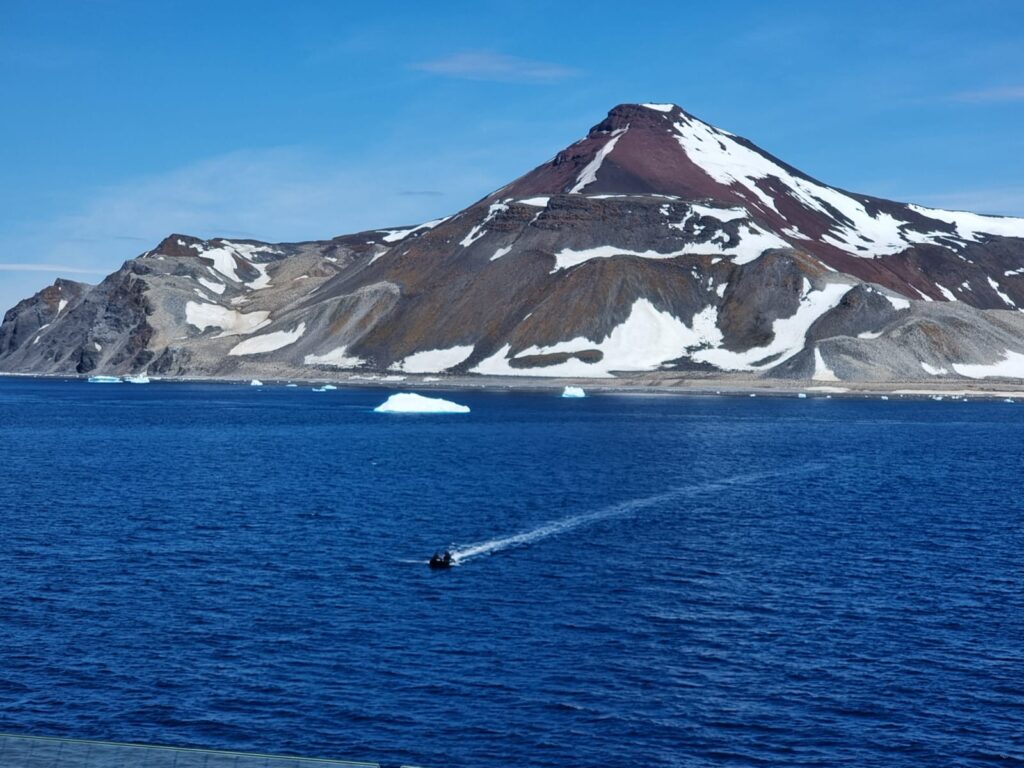
On December 11, we reached A23a, the largest iceberg in the world, which has hardly moved for years since it broke off from the Filchner-Ronne Ice Shelf in 1986 and is now drifting towards the South Atlantic. 4000 km², an area three times the size of New York City, 400 meters thick, 300 meters of which are under water. From a distance, it looks like a thin layer on the water. At 100 meters, however, it is higher than all other icebergs.

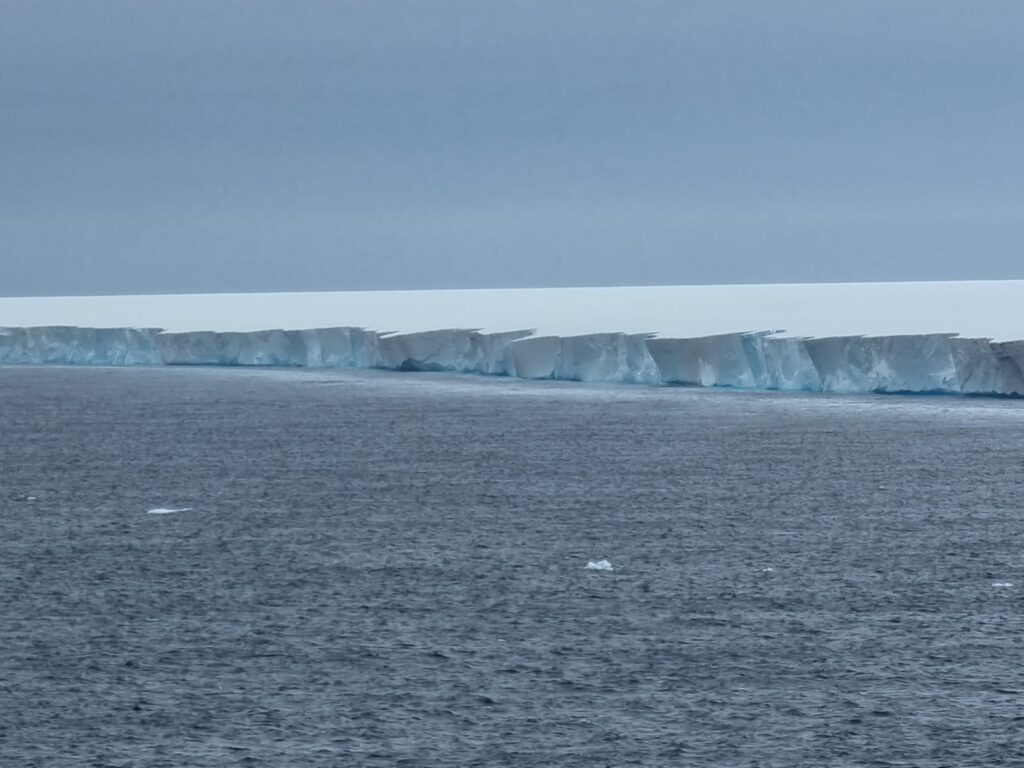

Two days later we reached Deception Island, the caldera of an active volcano with a narrow entrance about 500 meters wide and a rich history (more about Deception Island). The last eruption in 1970 had left clear traces of destruction. But life is back, especially as the water temperature in the caldera is around 10 degrees above the temperature of the surrounding sea due to the limited exchange through the narrow opening. Sometimes the black sandy beach steams in a spooky way. You only need to dig a hole of 10 to 20 cm in the sand on the beach with your hand and the ground becomes really warm. This was the second time I was able to enjoy the special atmosphere of this island and I set off right at the beginning to Neptune’s Window, a place where you have to be careful not to be blown into the abyss by the constantly strong winds.

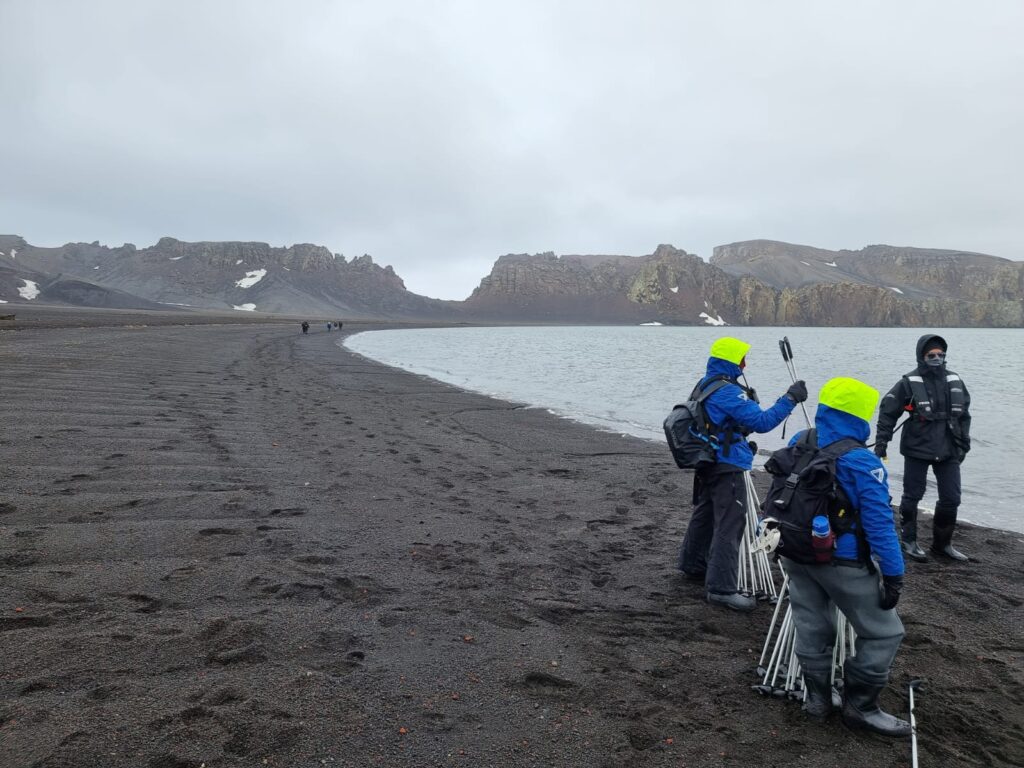
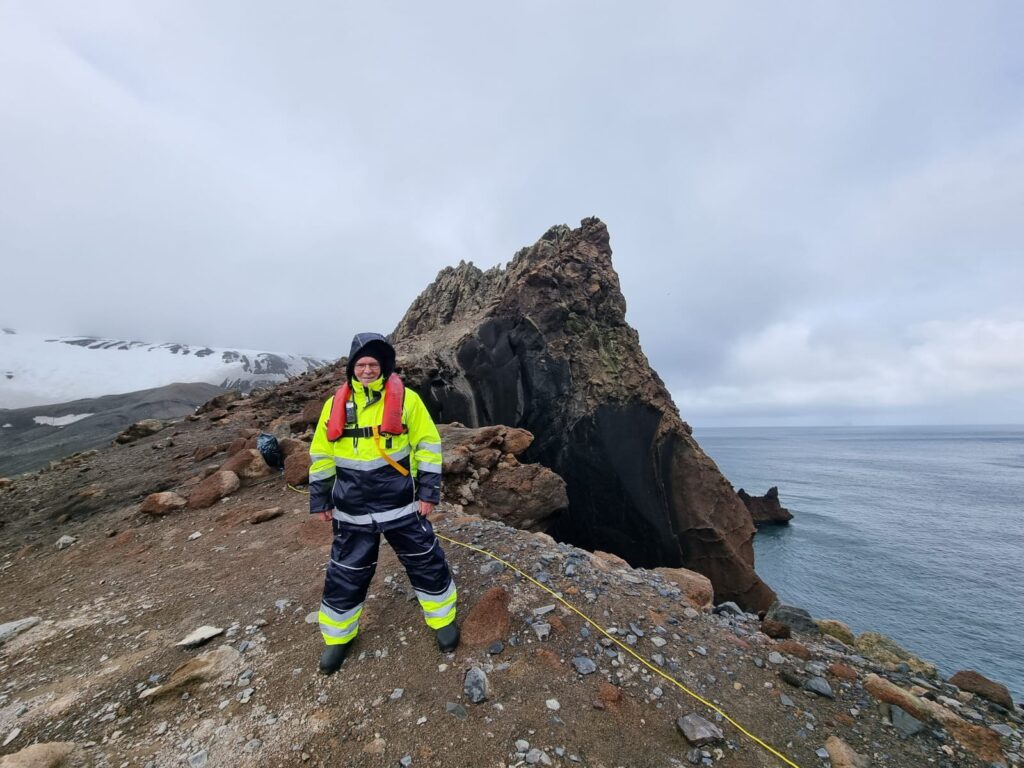

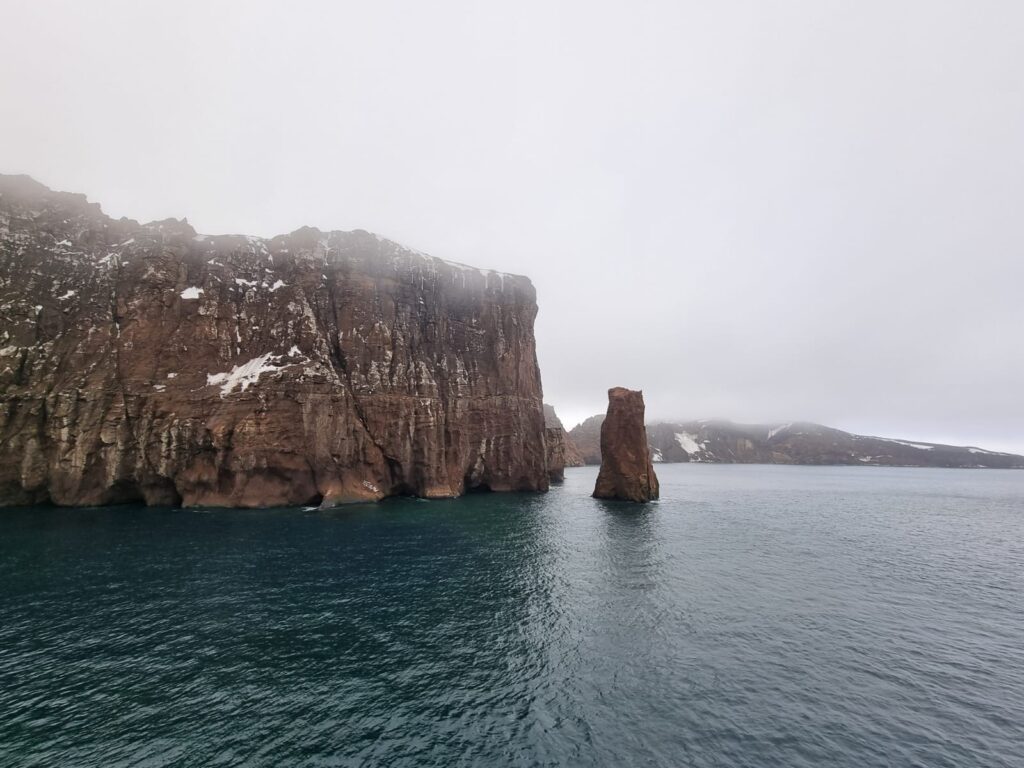
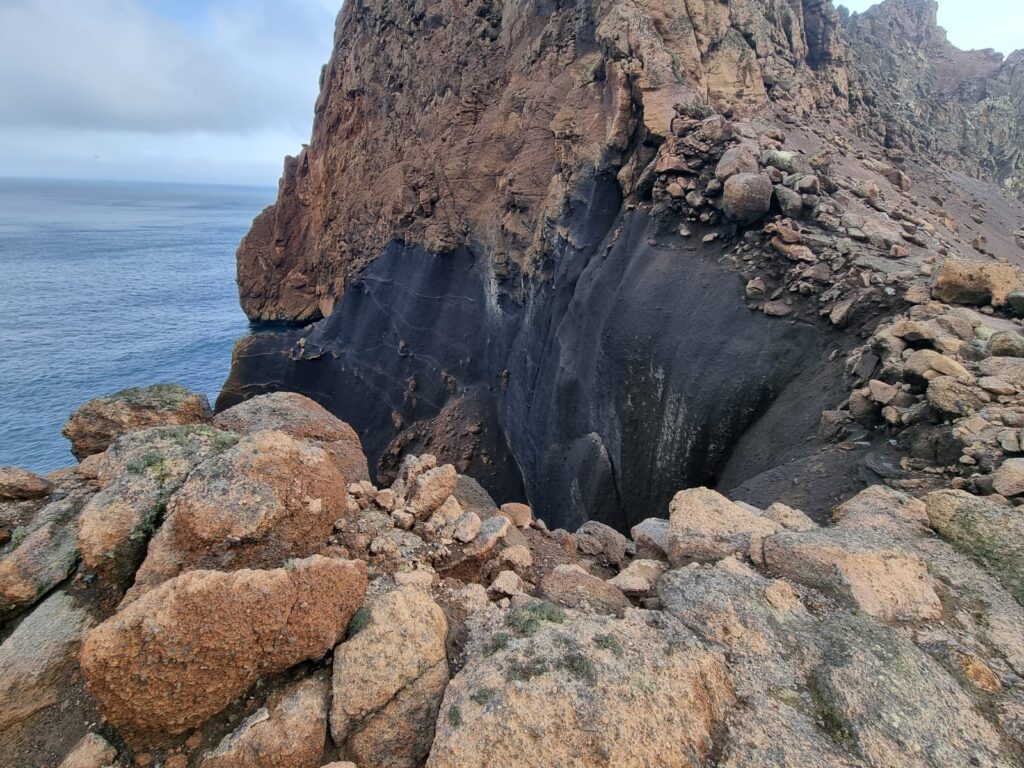






I was able to capture the first whales on camera on December 16. We had already come across many before, but I wasn’t quick enough to get there, especially as I am occupied at the Medical Center. We used the return trip to Ushuaia to train our stretcher team again.



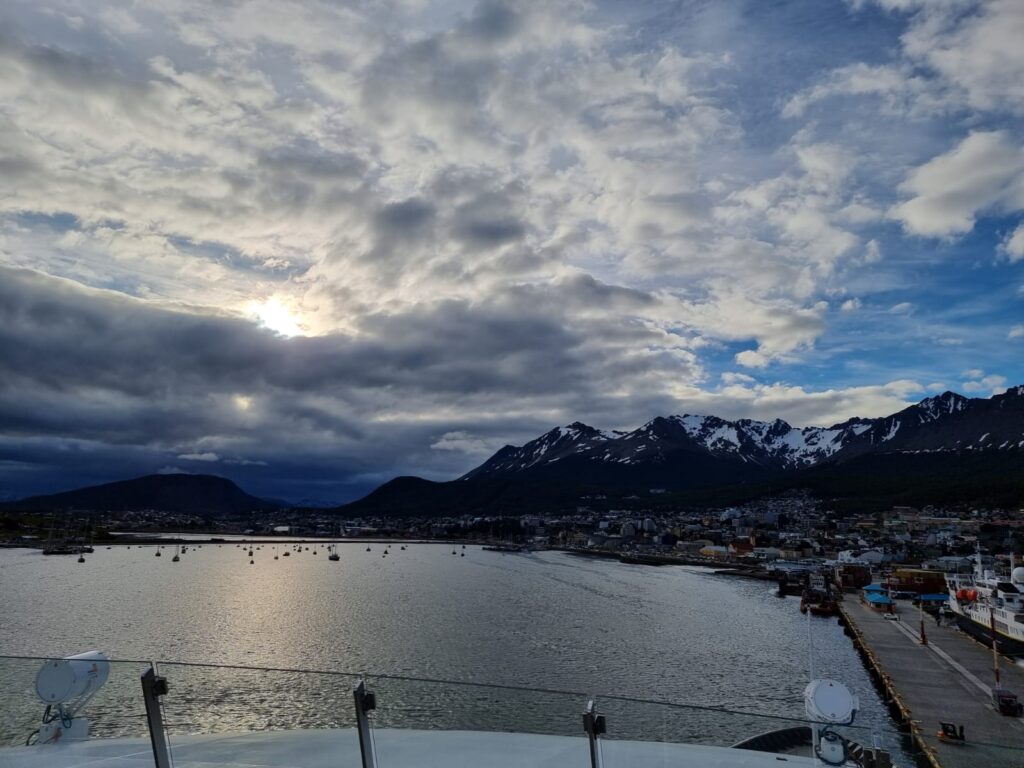
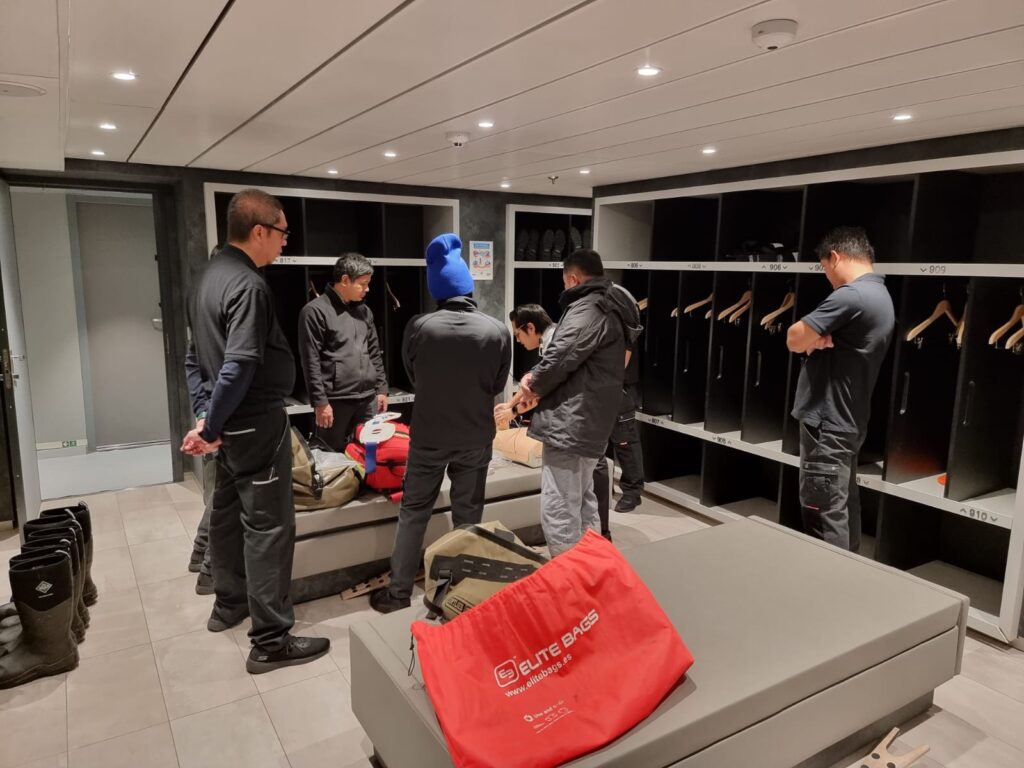
After that, our ship for the Christmas cruise was fully chartered by a tour group from Taiwan and we tried to cater to Chinese needs as much as possible. A special highlight was a meeting with our sister ship Scenic Eclipse, on which I myself had last spent a few months. The last day involved a landing on the Antarctic continent. Even though the South Pole was still more than 2800 km away in a linear distance, it could theoretically be reached on foot from there. Everyone wanted to be photographed at least once with the flag of the Antarctic continent.


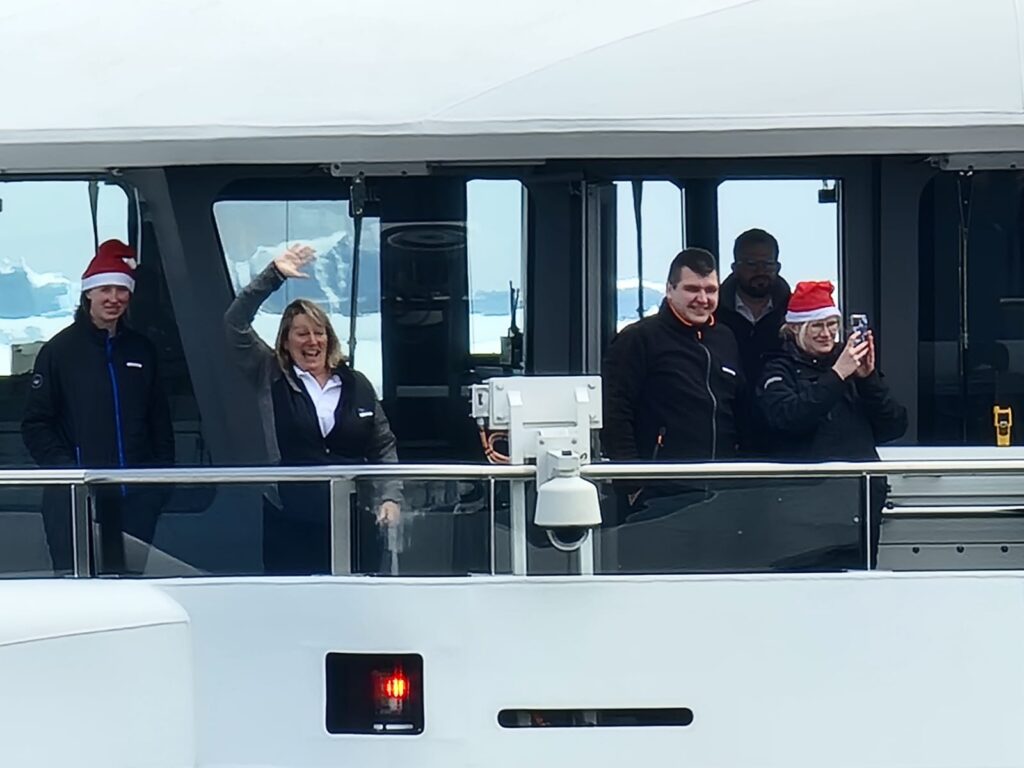



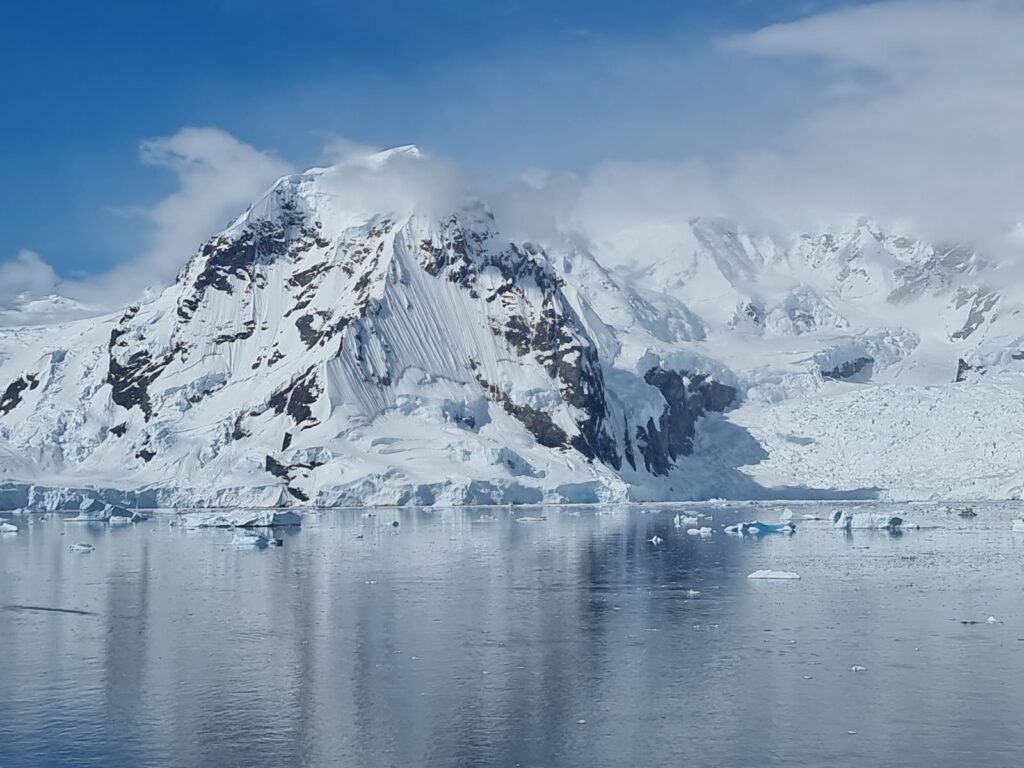
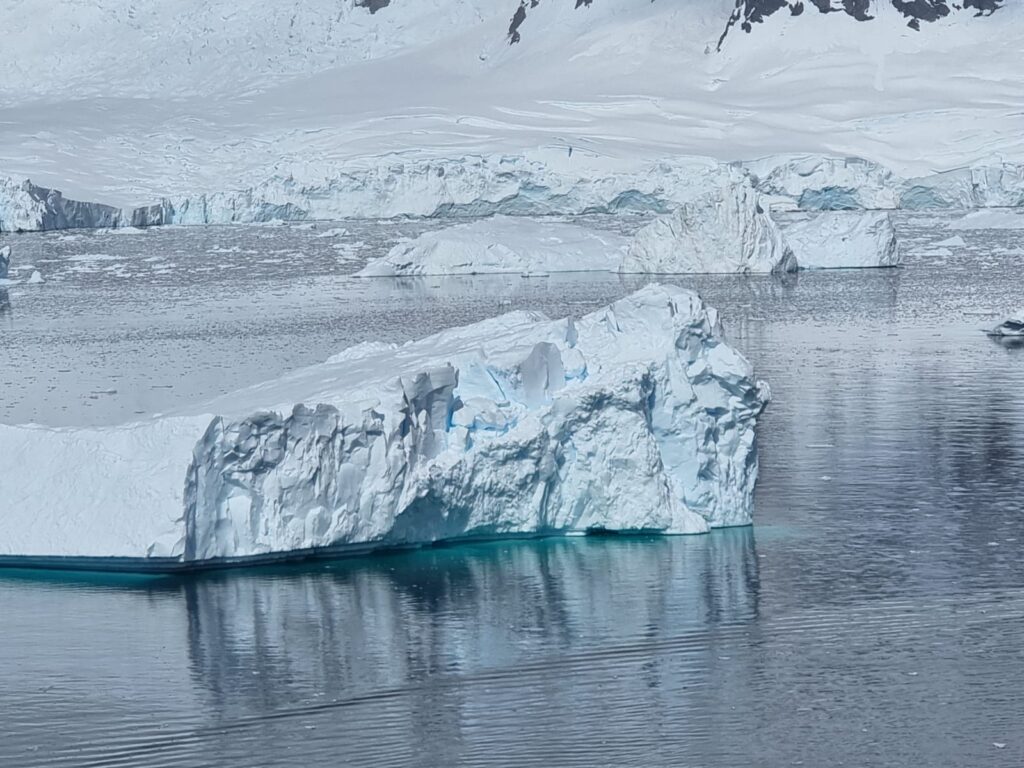
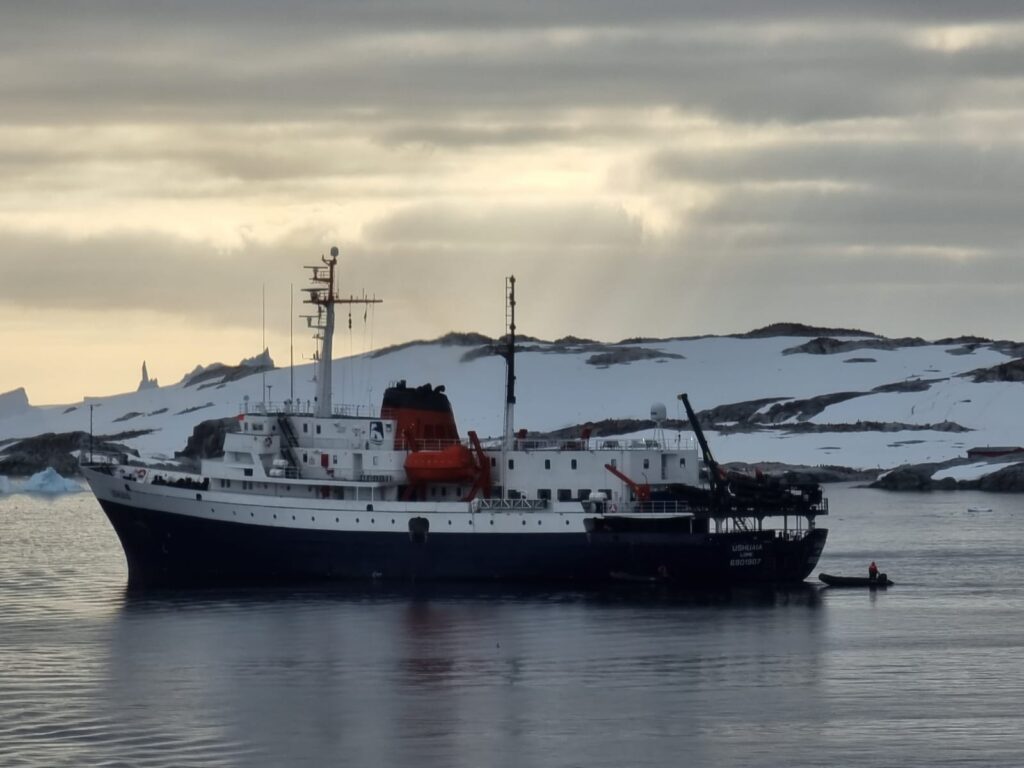
The “journey home” to Ushuaia was a little rougher this time. On the other hand, we were spoiled by the weather on the subsequent New Year’s Eve cruise.
The weather on New Year’s Eve was amazing. A steel-blue sky under a blazing sun. You couldn’t go outside without sunglasses with maximum tint. Otherwise your eyes would immediately start to become painfully teary. The UV radiation in such clear weather is extreme on this continent, which only has a thin layer of ozone. Even when the sky is gray and overcast, without the appropriate skin protection you will suffer sunburn after an hour outside at the latest. The light and the intense colors alone convey something unreal. You can’t really capture the mood, the experience, the impressions photographically. Nevertheless, I try again and again. Nowhere else in the world have I noticed a greater difference between the pictures and videos I have taken and the actual experience than in Antarctica. The magic can only be captured vaguely and in facets. No photo or movie can even come close to conveying what you experience on site with all your senses.

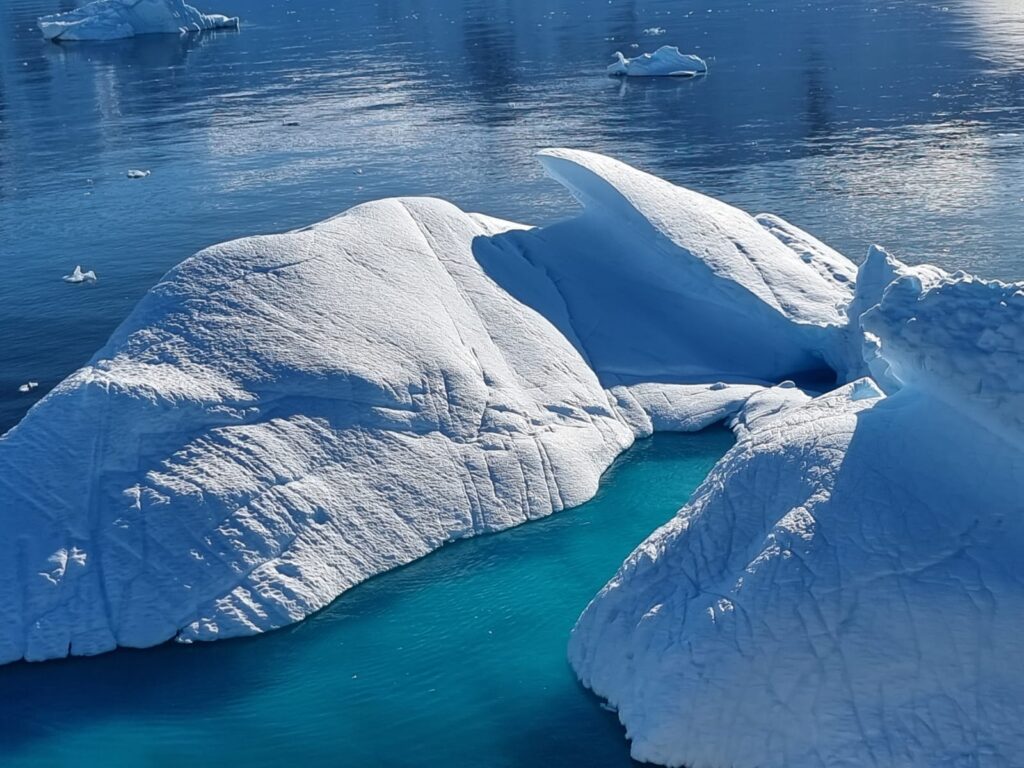
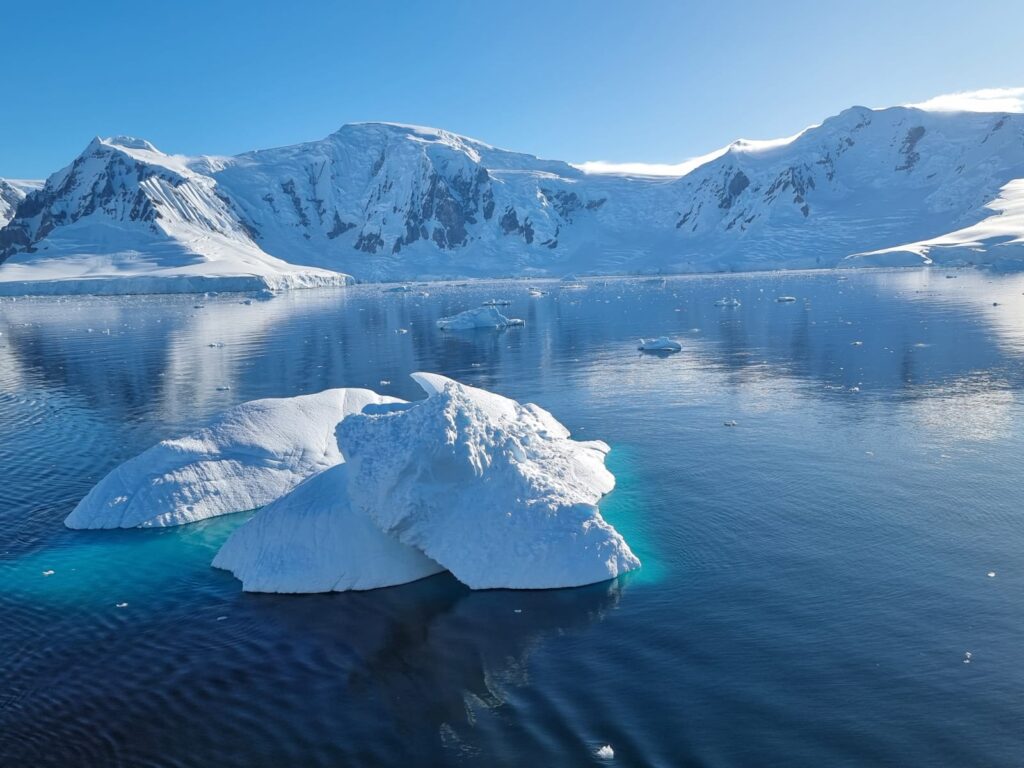


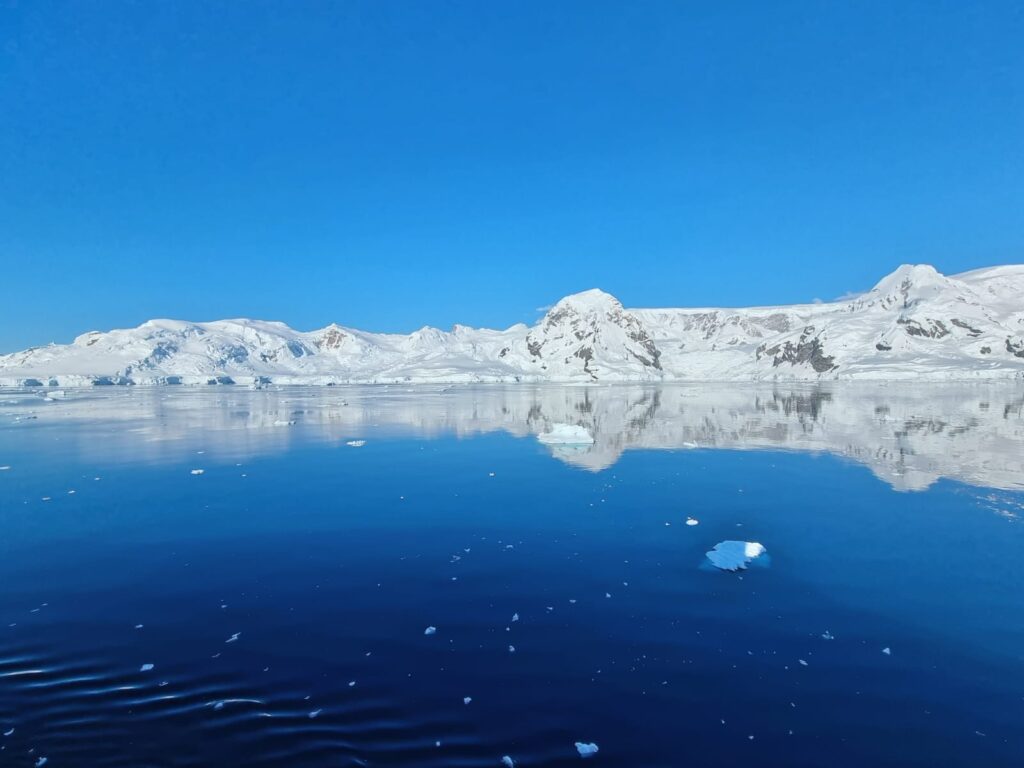
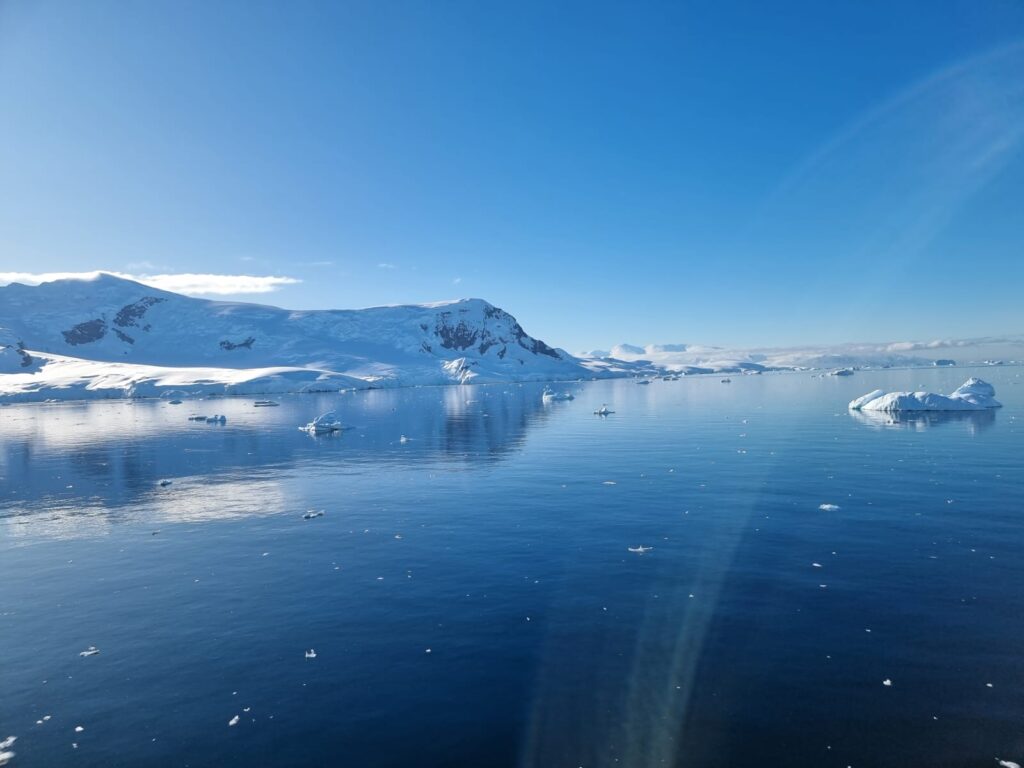
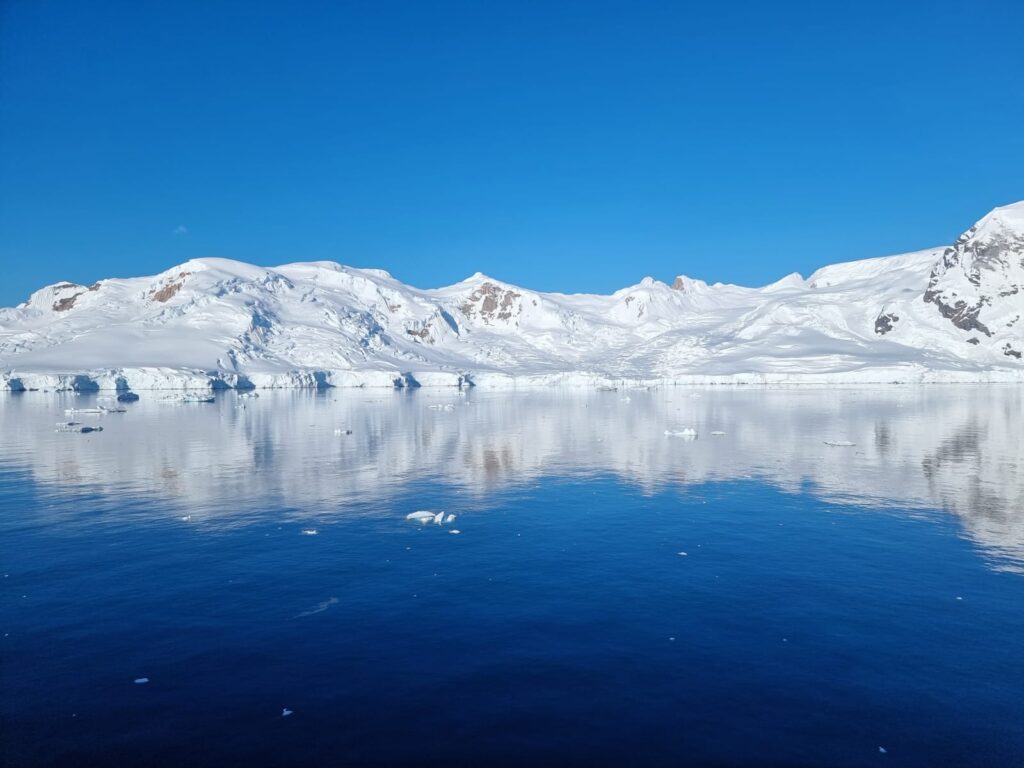

The following days were filled with encounters with whales, penguins and seals. On January 15, we visited Pourquoi Pas Island, where the midnight sun kept me awake. The next day was also characterized by breathtaking imperial weather. Humpback whales approached the zodiac boats and kayakers with curiosity. We also witnessed a massive glacier calving while we were ashore watching the birds. The edge of the glacier broke off about a kilometer away over a length of about 500 meters, causing considerable waves. However, that was not the problem. The falling icebergs moved violently in the water, breaking apart into many small pieces and creating a huge field of ice debris that quickly spread across the entire bay. It was only with great difficulty that we were able to get the remaining guests and the equipment we had brought back to safety and load them into the Zodiac boats. About 15 seconds before the approaching ice debris blocked the way, the last boat managed to leave the shore and make its way back to the mother ship.
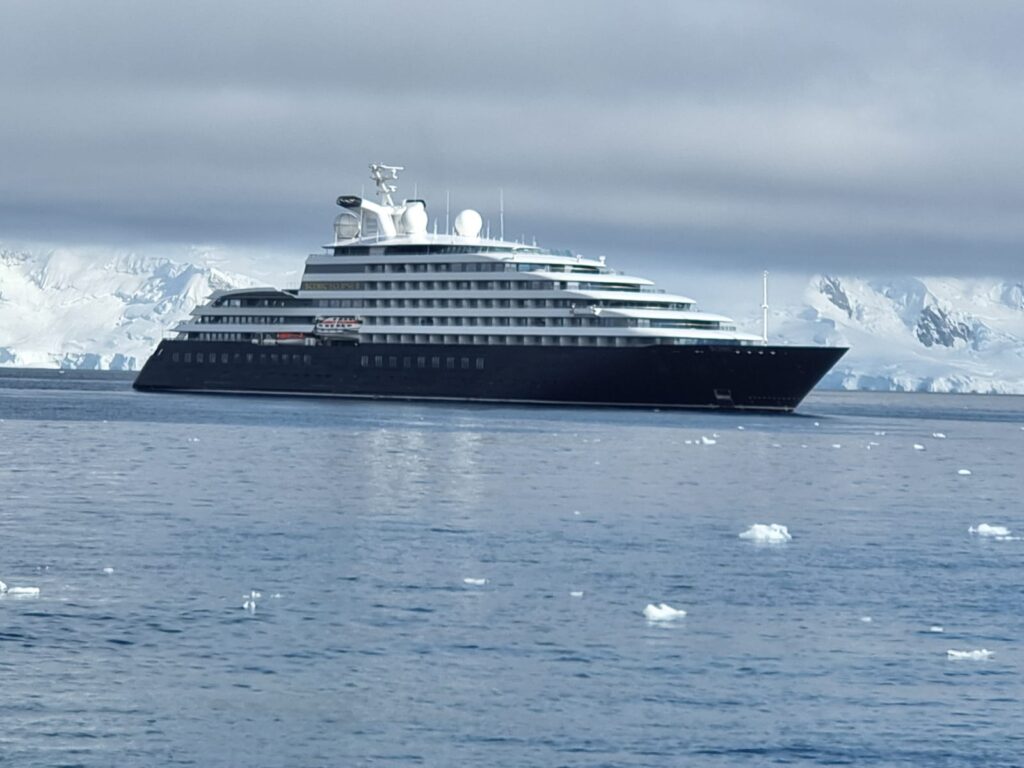

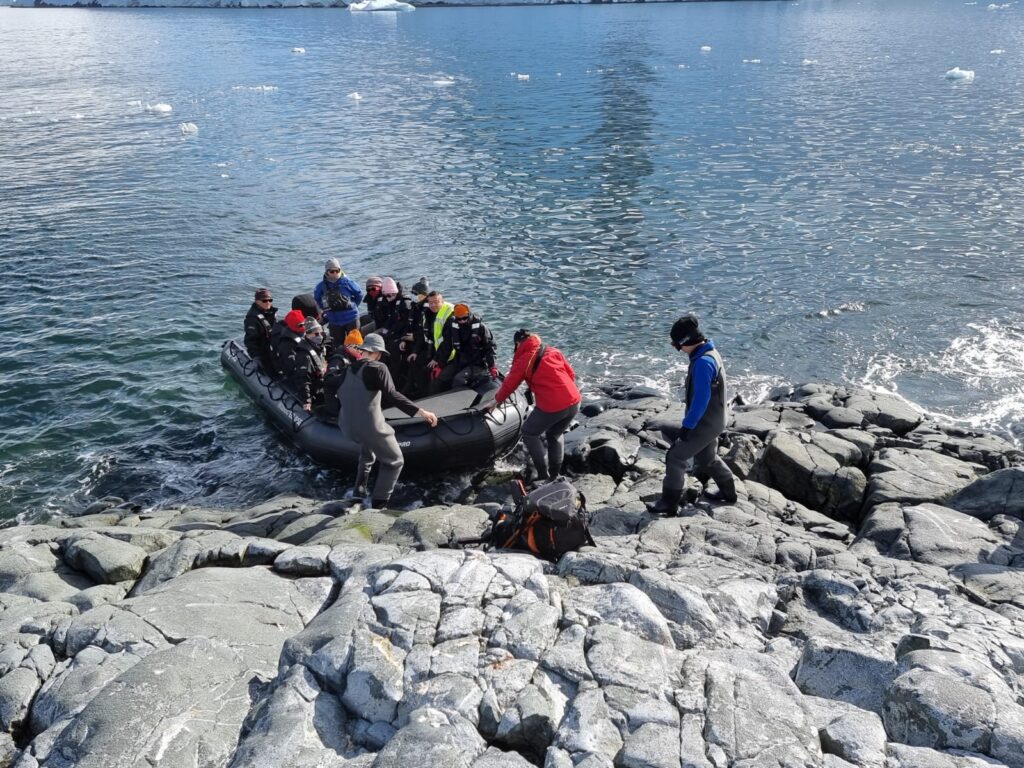
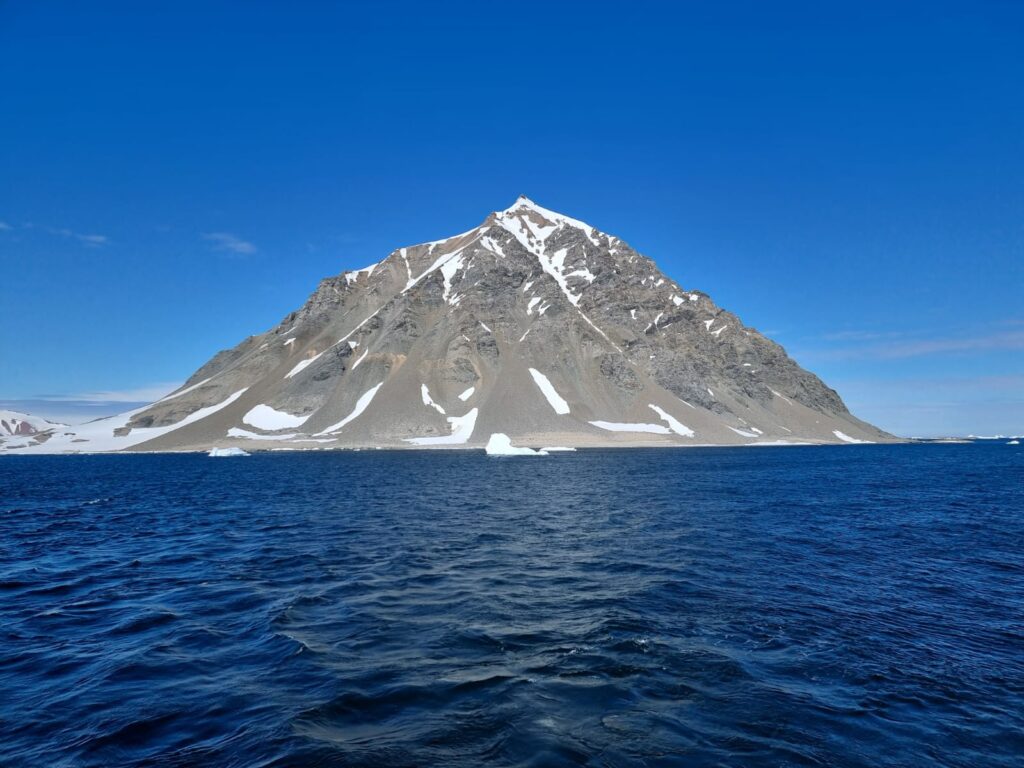




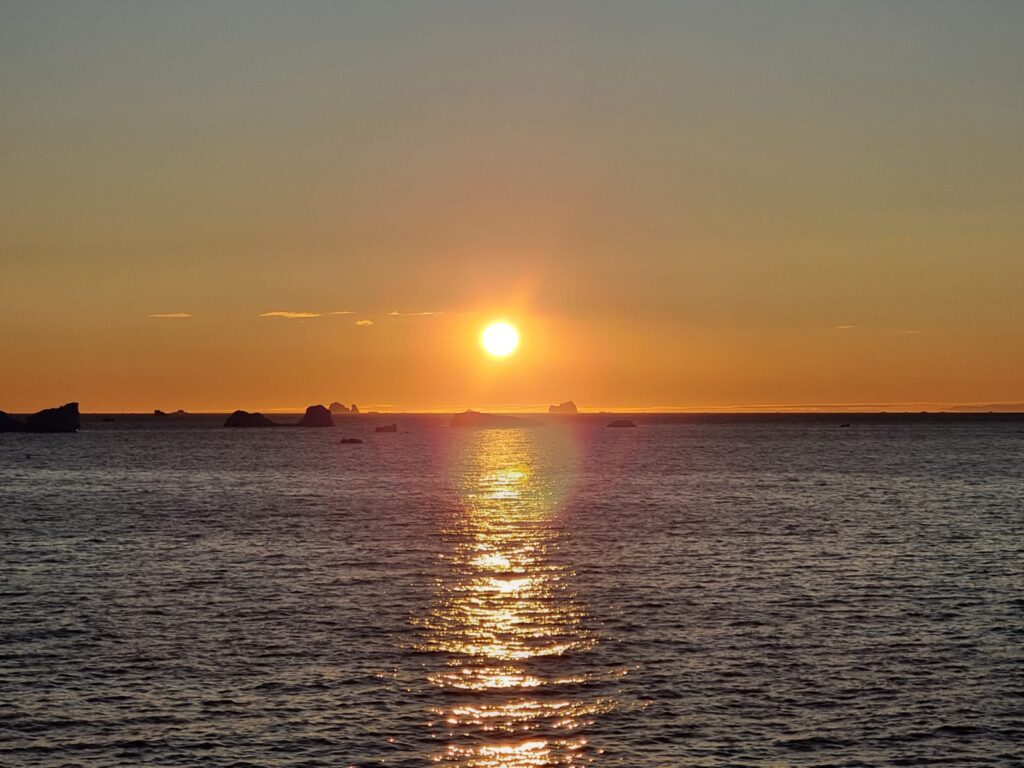
In the afternoon, we were visited by scientists from the British station at Port Lockroy. After the presentations, they also brought some goods for sale, which helps to support the UK Antarctic Heritage Trust financially. They even brought postcards that could be sent by Royal Mail with official stamps and a Port Lockroy UK Antarctic Heritage Trust postmark. Of course, I didn’t want to miss out on this. The weather deteriorated noticeably, so that the Bark Europa, which was not far away, was only vaguely recognizable and somehow reminded me of the Silent Mary, the ghost ship of the Spanish Armada from the film Pirates of the Caribbean.
Once we were all happily reunited, we enjoyed the entrance to the Lemaire Canal.
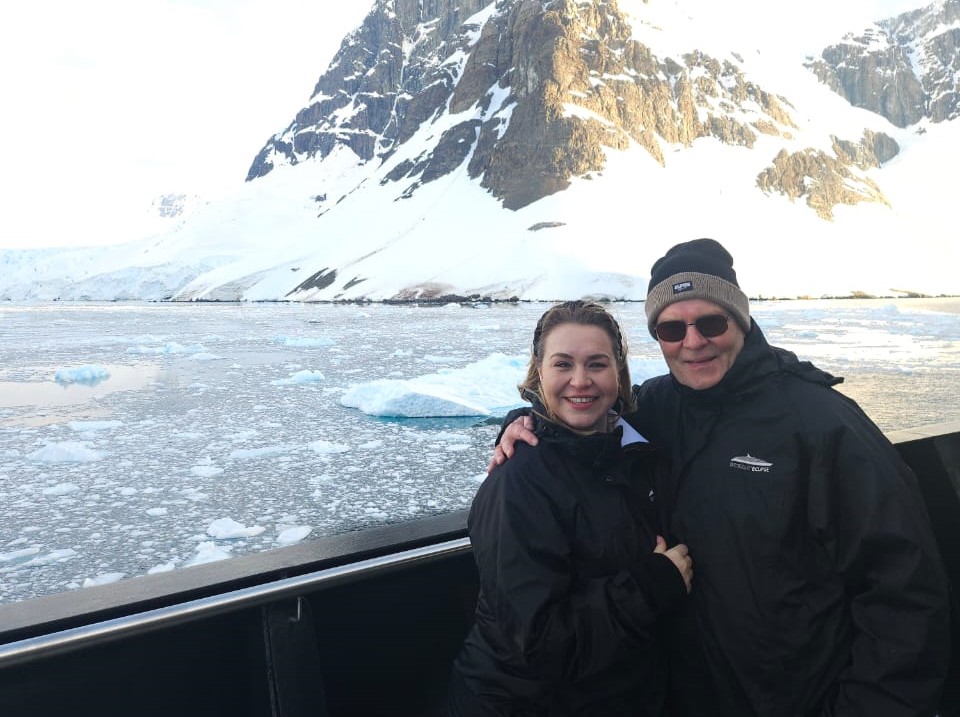
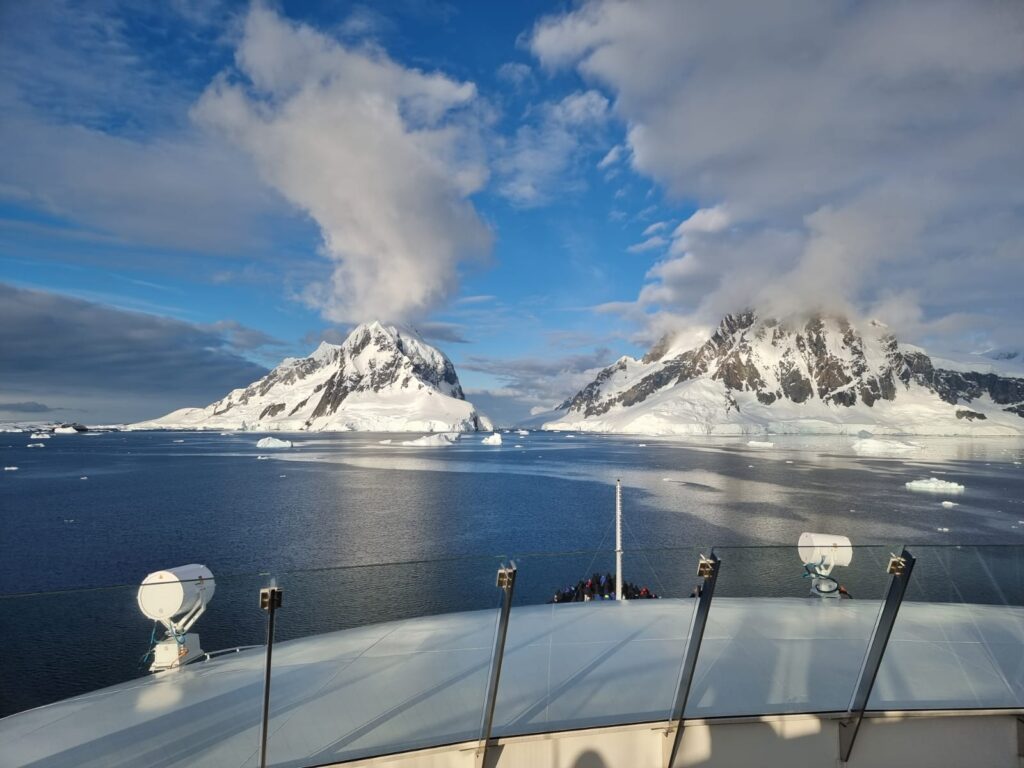
On January 18, it turned cloudy, with snow and rain. But we still explored Palaver Point and Charlotte Bay. Shortly before we were about to set off on our return journey to Ushuaia, we visited a family of humpback whales that were coming closer and closer to the ship for their dinner. So we had to wait until all the humpback whales had moved a little further away for dessert. The Drake Passage showed its rough side on the return journey with 140 km/h winds and waves of up to 7 meters.
After almost four months, this long journey from Galicia in Spain to Antarctica came to an end. From Ushuaia, I flew back to my hotel in Buenos Aires. Four more flights followed the next day: Madrid, Lisbon, Ponta Delgada and finally Santa Maria. After two and a half days of traveling, I was back home on my island.



